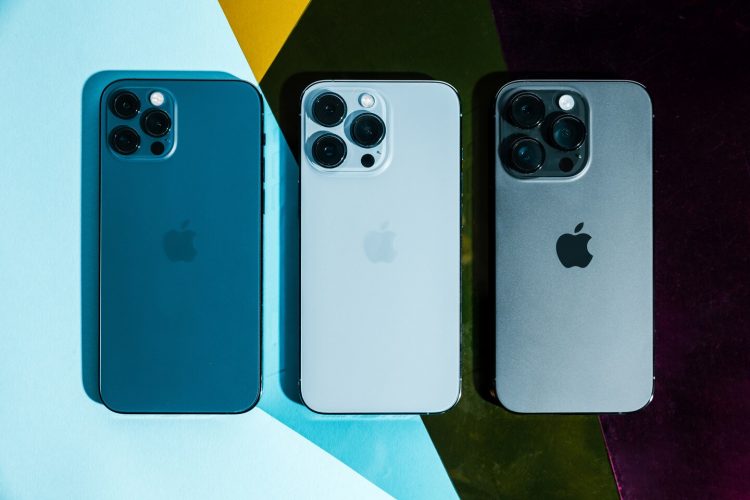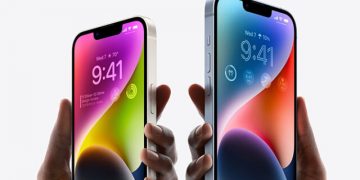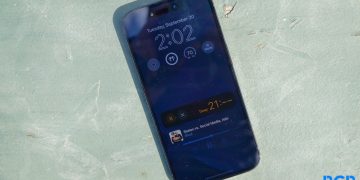Get out your magnifying glass.
Apple’s iPhone 14 is better than the iPhones that have come before it. But you’re going to have to look really, really close to even notice.
How close? In our camera tests, we had to study one shot for 15 minutes to tell it apart from a photo taken on a three-year-old iPhone 11 Pro. “Solid but subtle” is how we would describe the iPhone 14 upgrade, including an emergency satellite connection we hope you’ll never need, modest battery gains, and a new shape for the front cutout on the 14 Pro models.
Gone are the days when iPhone updates bring gotta-upgrade-now improvements for everyone, but millions of us will probably buy a new iPhone anyway. It’s like staying with a good life partner long after the spark is gone.
The question these days isn’t whether to upgrade your iPhone, but when. To help you decide, we’re answering questions we’ve heard from Washington Post readers through our website, email and Instagram. (Please keep the questions coming.)
To start, the Help Desk made a quiz to answer the most important question: Do you need a new phone?
Then, we focused not just on how the iPhone 14 compares to last year’s iPhone 13 — but rather, what you might experience coming from an iPhone 11, XS, 8 or even older.
Here’s what you need to know:
Apple has four new iPhones with familiar prices, but the lineup is a little different this year. The standard iPhone 14 ($799+) sports a familiar design and last year’s processor, and it will be joined on Oct. 7 by a 14 Plus model ($899+) with a bigger screen and longer battery life.
Apple saved much of the fun stuff, like the faster A16 Bionic processor, an always-on display and a cute new use for the front-camera cutout called Dynamic Island, for the iPhone 14 Pro ($999+) and Pro Max ($1,099+).
So, should you go Pro? Those phones are meant for people who are more obsessive over some features. We’ve found that the Pro models can do some tasks, like rendering some videos, slightly faster than the standard 14, but the difference is imperceptible in normal use. The Pro screens are smoother and brighter, too, although that might not mean much to folks who don’t play graphically rich games or spend a lot of time outside.
What about going Pro for the camera? It’s worth it, but it helps if you like to spend time poring over your shots. (See our handy camera comparisons below.)
One of the most-hyped new features across all the iPhone 14 models is Apple’s Emergency SOS via satellite feature. You’ll be able to text key information like location and your condition, to emergency responders if you’re caught somewhere without cell service, plus share your location with others while you’re off the grid. (Sorry, you can’t satellite-text your pals.)
Alas, we haven’t been able to test this — it won’t be ready until November.
For people who haven’t gotten a new phone in four or more years, the iPhone 14 is a fine place to start.
The A15 Bionic processor inside is more than powerful enough for your daily routine and should last for many years of software updates. The battery lasts only an hour longer than on the iPhone 13, but Apple has made larger improvements over the past five years, leaping from 13 hours of video playback in 2017’s iPhone X to 20 hours in the iPhone 14. We’ve managed to use it for full working days with enough power left to catch up on emails the following day.
But wait: “Is it the same as the iPhone 12?” reader Pablo Beltrán asked on Instagram. The design of the 14, 13 and 12 do look nearly identical. And 2020’s iPhone 12 is now a decent deal: It supports 5G networks and has a slightly inferior camera and battery. Apple is now selling the iPhone 12 for $599 — $200 less than the new model.
One more question on cost: “What makes it sooo expensive,” Seungmin Ryu asked on Instagram. Apple didn’t raise its prices this year, but here’s our advice: Don’t pay full price. Between trade-in deals and promotions from your wireless carrier, you should be able to pick almost any new iPhone at a solid discount.
If you’re using an iPhone 12 or newer, wait for the next batch. Upgrade when it feels right to you. There is some nifty tech in the 14, but we’re all about getting as much use as possible from our devices before upgrading.
The iPhone 14 is also not for people who prefer smaller phones. If you’re worried about this, try last year’s iPhone 13 mini for $599, or cast your eye over to Samsung’s $999 Galaxy Z Flip 4, a smartphone that folds over like a flip phone.
What’s the deal with eSIMs?
All iPhone 14 models sold in the United States are built to work exclusively with embedded SIMs, or eSIMs, and so far, the switch has been painless. Activating the phone with a demo line of service took about a minute, and transferring a personal phone number from a physical SIM card took a minute and a half — and zero calls to customer service.
On Instagram, reader Sebastian Gomez asked whether the physical SIM in his old phone will stop working forever after activating an eSIM. That’s correct — once you transfer your phone number off a physical SIM card, you usually can’t reactivate service on that plastic chip again.
How much better is the camera?
“Tell me why the camera in the new 14 model is better than the camera in the 11 Pro Max,” requested Vicki from Florida. To some, a better camera is the No. 1 reason to upgrade, and people like Vicki might be surprised.
For our tests, Chris hit the city with a stack full of iPhones from many years, as well as a few Android competitors. Then he took the same shots on each of them and asked Geoffrey (who didn’t know which picture came from which phone) to pick the best images.
Geoffrey chose the iPhone 14 Pro shots every time. That means that camera really is better, particularly at picking up detail and shooting in dark conditions — a result of the way its 48-megapixel main camera sensor acts like a 12-megapixel sensor to capture more light.
But keep in mind, in some cases, Geoffrey had to spend quite a bit of time zooming into the pixels just to be able to tell the difference. A few times, he nearly chose the shot from the iPhone 11 Pro — and there were even cases where an old-timey iPhone 7 shot looked just fine, too.
The differences are especially tough to spot when you’re shooting during the day, or in a brightly lit room. Take a gander at these photos of the Golden Gate Bridge, taken on a Sunday afternoon:
If you zoom way in on the original photos, you see that the one taken by the iPhone 14 Pro Max retained the most detail, followed closely by the 14’s photo. But zoomed out, the 11 Pro caught our eye a bit more. That’s the thing about smartphone photos: Taste matters just as much as technical prowess.
In low light, though, the differences between these cameras is much more apparent.
The iPhone 7 was a dud, but almost every subsequent iPhone did a better job of capturing detail and brightening the scene. (The iPhone 14 fell short here, for reasons that aren’t quite clear.)
And even when you factor in phones that are known to be solid at night photography, like Google’s Pixel 6 Pro, the photo that came out of the iPhone 14 Pro Max’s big camera sensor had — to our eyes, anyway — the best blend of color and detail.
We didn’t find much use in another iPhone 14 camera upgrade: Autofocus on the front selfie camera. As with regular photos, selfies taken with the 14 show off fine detail a little better but weren’t dramatically different. And in the dark, selfies from Apple’s new iPhones didn’t look much better.
One more camera question: “Is Portrait Mode (main cam) faster?” a user named Sacafotos asked on Instagram. This is a big one for parents. In our tests, portrait on the iPhone 14 Pro was just slightly faster — but still not as fast as the regular camera.
How useful is the Dynamic Island?
The Dynamic Island replaces the notch in the iPhone 14 Pros, and this shape-shifting blob that covers the camera hole in the screen offers a quick visual reminder that your phone is still doing something in the background. (Think playing music or counting down in a timer.) And if you need to jump back into whatever app is doing that work, a quick tap of the Island brings you there.
Instagram user Peter Philpott asked how many items can function inside the Dynamic Island at the same time. For now, the answer is only two, but no matter — we haven’t found ourselves relying on it much. In time, app developers may cook up ways to use the Dynamic Island. In the short time we’ve used it, though, the Island hasn’t ever felt terribly useful — just sort of cute.
Source by www.washingtonpost.com




























